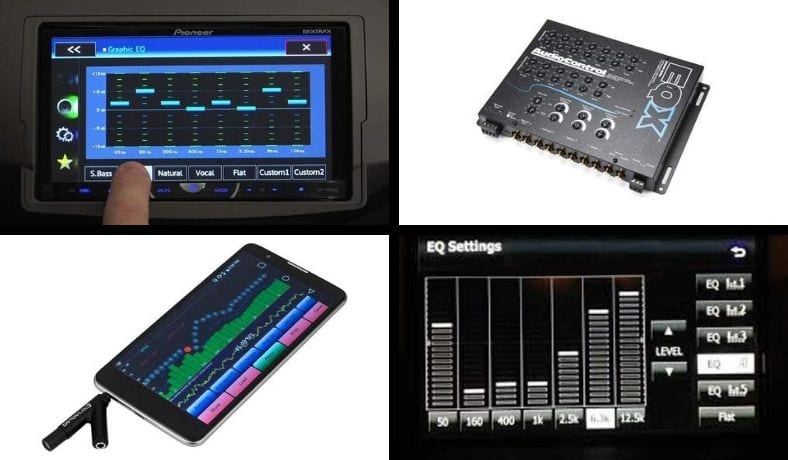Car audio enthusiasts share a common obsession: the pursuit of impeccable sound quality. Whether cruising down the highway or navigating city streets, the auditory experience within a vehicle can elevate every journey. However, achieving that crystal-clear sound is not merely a product of high-end speakers or amplifiers; it heavily relies on meticulous equalizer settings. Equalization (EQ) is more than just a technical necessity; it serves as the alchemy that blends various sound frequencies to cater to personal preferences and the vehicle’s acoustics. Let’s delve into the intricacies of EQ settings that can transform your car audio experience.
The essence of an effective equalizer lies in its ability to manipulate sound waves. Car interiors, often shaped by materials such as upholstery, glass, and metal, create unique auditory environments. Consequently, what sounds phenomenal in one vehicle might falter in another. Understanding the relationship between your ears, the music, and your car’s acoustics forms the cornerstone of achieving optimal equalization. It’s time to explore frequencies, nuances, and recommended settings that yield an extraordinary soundscape.
First, grasping the frequency range is fundamental. Sound frequencies are typically categorized as follows:
- Sub-bass (20-60 Hz): This range provides the thunderous rumble felt in genres like hip-hop and electronic music. While too much emphasis here can overwhelm, it is essential for tracks that rely on deep bass lines.
- Bass (60-250 Hz): The body of sound, bass frequencies add warmth and fullness. A well-balanced bass setting enhances rhythm without compromising clarity.
- Mids (250-2000 Hz): This is where much of the instrument and vocal content lies. Mids define the character of the music, making them crucial for clarity and presence.
- Highs (2 kHz – 20 kHz): High frequencies inject brightness and airiness into the music. However, excessive highs can lead to ear fatigue, making moderation vital.
With this foundational knowledge, we can shift to practical equalizer settings. In an ideal scenario, the specific settings will vary based on personal taste and the unique acoustics of your vehicle. However, the following guidelines serve as a robust starting point:
1. Sub-bass Adjustments:
Begin with a subtle boost of 3-4 dB in the sub-bass range, particularly if your speakers are capable of producing low frequencies efficiently. This enhancement offers depth without being overpowering. Listen to your favorite tracks with strong basslines and adjust until the thump feels pronounced yet coherent.
2. Bass Calibration:
A smarter approach might involve lowering the frequency between 60-250 Hz by 1-2 dB to counteract any overwhelming boominess that may arise. This adjustment allows for a more articulate bass presence without muddiness, ensuring that rhythm instruments shine alongside vocals.
3. Midrange Magic:
The mids are the lifeblood of any audio track—here’s where your ears spend most of their time. A slight boost of 2-4 dB in the midrange frequencies, particularly around 800 Hz to 1 kHz, enhances vocal clarity and instrument separation. For dense tracks, consider pulling back the mids just slightly to create space and prevent congestion.
4. High Frequencies Fine-Tuning:
Crisp highs can invigorate the music, yet they demand careful handling. Adjust the highs between 3 kHz to 8 kHz up by 4 dB for an initial boost. However, be wary; if percussion sounds harsh or sibilant, dialing back may be necessary to prevent piercing sounds that can lead to listener fatigue.
Many enthusiasts often overlook the spatial components of their sound. Enhancements such as stereo width and localization can provide a sense of depth. Implement these on a separate graphical equalizer if available. Settings that widen the stereo image promote a more immersive experience, compelling listeners to revel in the intricacies of each note.
Why invest time in perfecting your EQ settings? The answer lies in the art of sound. Much like a painter finds their palette, car audio aficionados discover unique frequencies that resonate with their aural sensibilities. It is a deeply personal journey—one where enjoying the subtle differences in sound is akin to savoring a high-quality wine. It is appreciation of complexity and nuance that can turn an ordinary car ride into an extraordinary musical journey.
That said, remember that equalizer settings aren’t sacrosanct; they change as per the genre of music you’re indulging in. Rock may crave a punchy bass and dynamic mids, while classical demands clarity and balanced frequencies. Thus, adapt and evolve your settings as your taste dictates—this is part of the allure of car audio.
Finally, don’t underestimate the role of the listening environment. Your car’s interior—the placements of speakers, windows, and even your seating position—can affect how sound travels and is perceived. Multifaceted acoustics influence the propagation of sound waves, and understanding this will help you reach a more profound level of satisfaction with your audio setup.
Ultimately, the goal is not simply to hear the music but to feel it resonate within you. By fine-tuning your equalizer settings, you’re not just rediscovering tracks you’ve long enjoyed, but also engaging with sound on a level that transcends the auditory—transforming your escape on the road into a thrilling auditory adventure. Embrace your sound savvy; with the right EQ settings, each drive becomes a celebration of music’s power.
